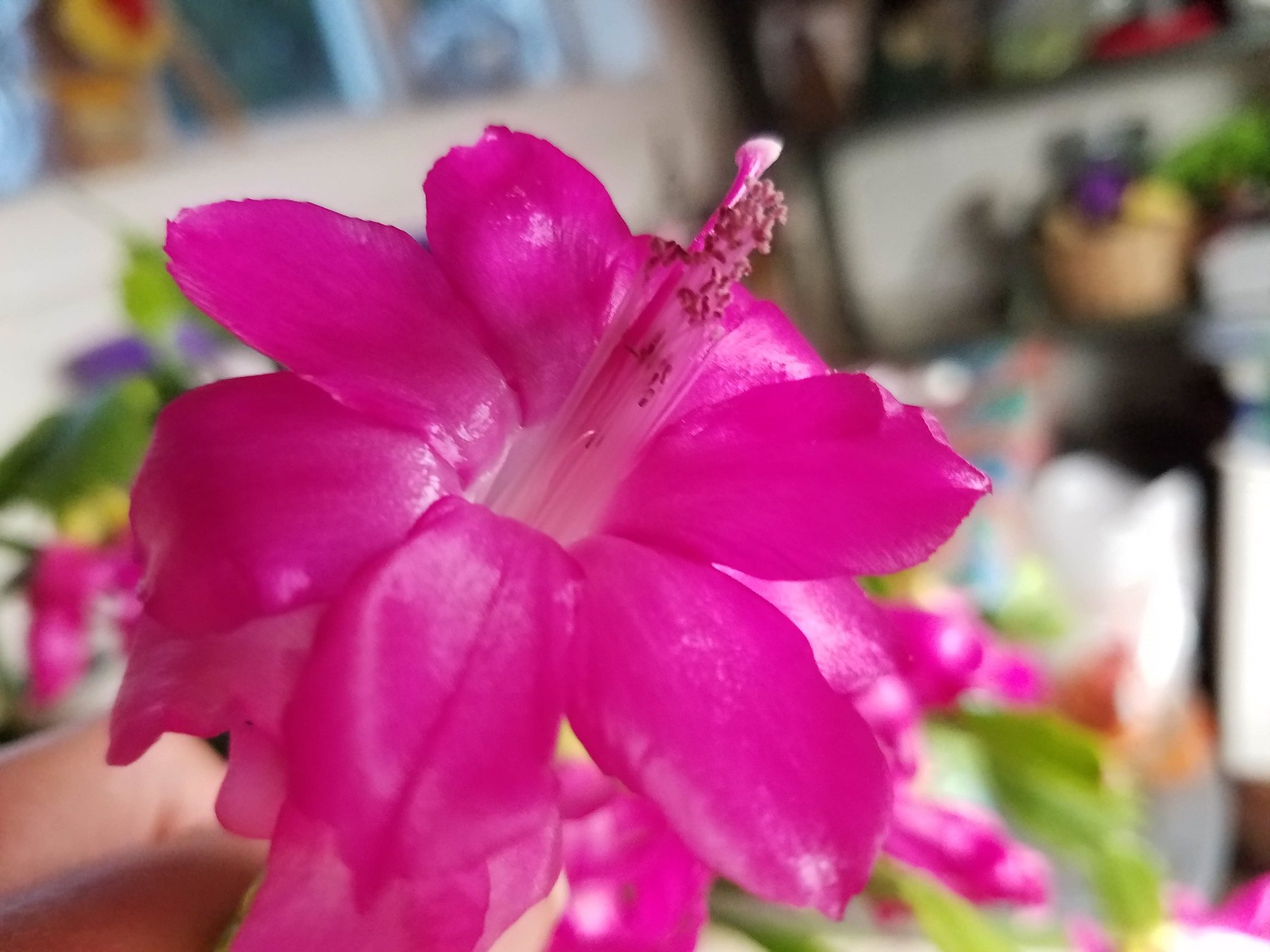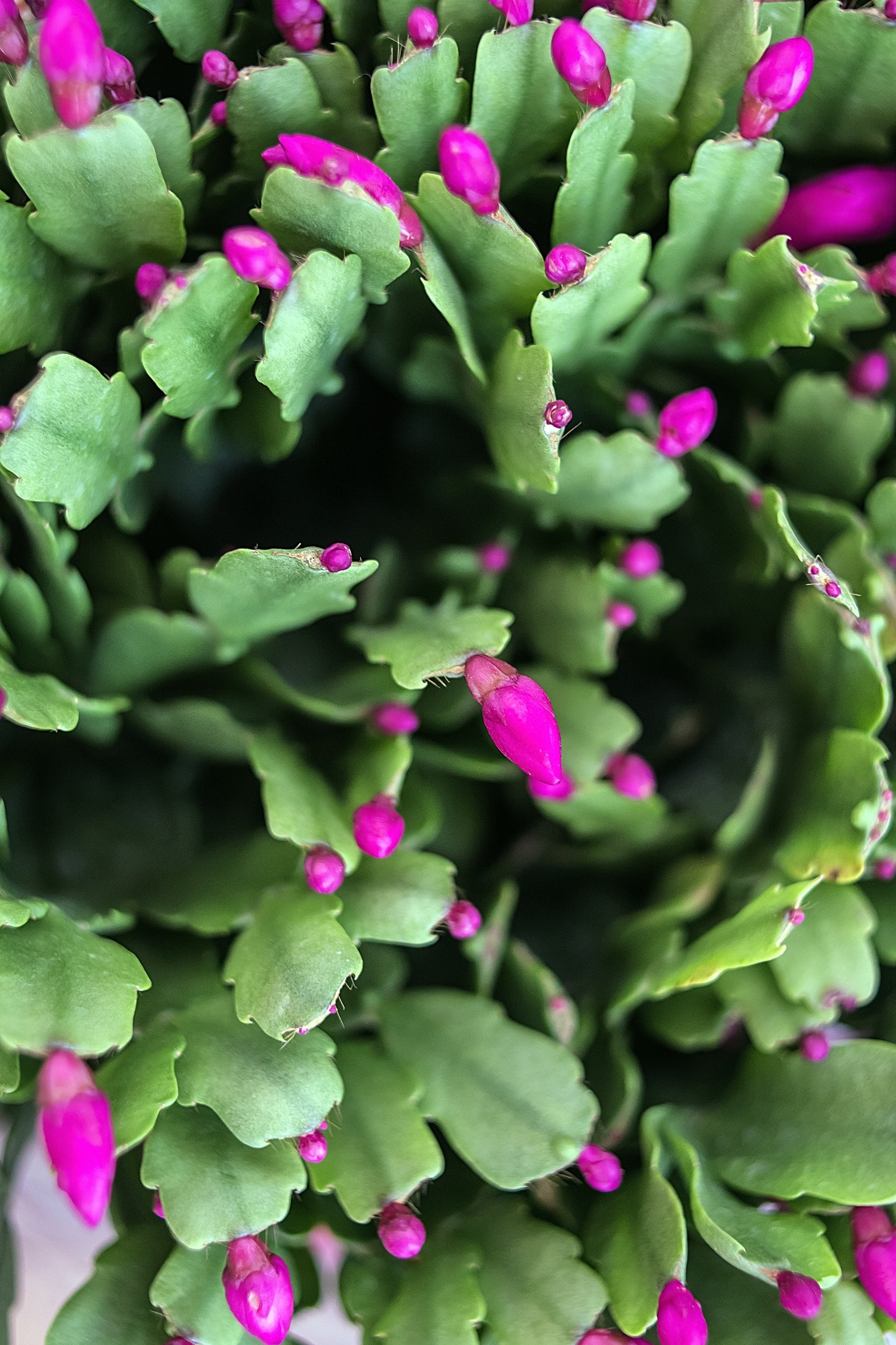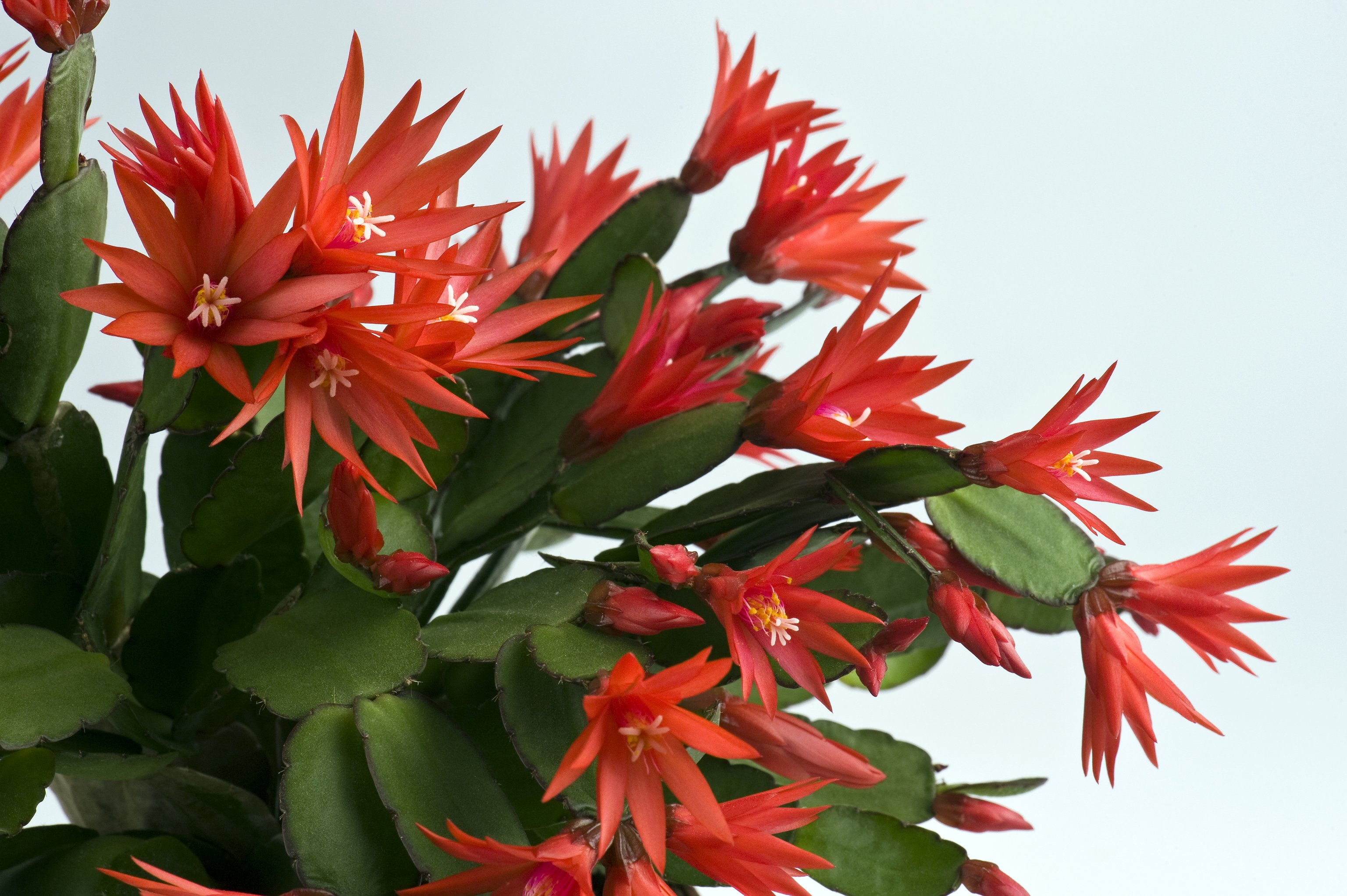Christmas, Thanksgiving or Easter Cactus? How to tell
Next to the poinsettia, the Christmas cactus (genus Schlumbergera) is one of the most popular plants to give and receive during the holiday season. And for good reason — its lovely, draping blooms of red, pink or white often appear around Thanksgiving, Christmas or Easter.
But wait, if it’s a “Christmas” cactus, why does it bloom in early November or later in the spring?
The answer is simple — it’s probably not a Christmas cactus. If the plant blooms in the fall or spring it is most likely a Thanksgiving or Easter cactus.
Confused yet? You’re not alone.
First, calling these plants cacti is a bit of a misnomer. Unlike desert cacti which are highly drought resistant, these holiday houseplants are actually succulents and they’re epiphytes — a plant that grows on top of another plant non-parasitically. Plants in the Schlumbergera family grow in and among the tree branches in the tropical rainforests of Brazil, and given their natural habitat, they require lots of water to thrive.
I have been growing two of these lovely plants for over 20 years (some Christmas cacti have been known to live for over 100 years!). Both my cacti bloom around Thanksgiving which means I am growing Thanksgiving cacti (Schlumbergia truncata), not Christmas cacti (Schlumbergera x buckleyi). Easter cacti (Schlumbergera gaertneri) blooms in the spring.
Three types of Schlumbergera and how to tell them apart
The holiday cacti of the Schlumbergera species are split into three main types. The Thanksgiving cactus, the Christmas cactus, and the Easter cactus. So how do you tell which holiday cactus you have? The most definitive way is to note the shape of the leaves. Other clues include the flower shape and the pollen color on the blooms.
The leaves of the Thanksgiving cactus are most distinct, having two to four saw-toothed serrations along the leaf margins that give them a pointy appearance that resembles crab claws. In fact, the plant is sometimes called a “crab-claw cactus.” The flowers of this cactus are elongated and the pollen color on the anthers is yellow. It typically blooms in the fall between late October and November.
The leaves of a “true” Christmas cactus have a more scalloped or teardrop shape rather than having sharp points. The flower is also elongated, but the pollen color on the anthers is a pinkish-purple. If your cactus tends to bloom in the winter, especially around Christmas or into the New Year, then it’s most likely a Christmas cactus.
The leaves of the Easter cactus have very rounded to smooth edges. The flowers are very distinct in that they are star-shaped rather than elongated. The Easter cactus usually blooms in the spring (although both the Thanksgiving and Christmas cactus may rebloom at this time of the year too, just to keep us confused!).
Once you can identify the leaf shapes, it’s easy to tell which holiday cactus plant you’re growing!
• • •
Candace Godwin is a certified Idaho Master Gardener and the owner of The Coeur d’Alene Coop (thecoeurdalenecoop.com), a blog on gardening and raising backyard chickens.







